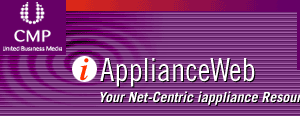



 |
 |
|
|
 |

|
||
|
|
|
|
|||

|
First Look: Will mobile go “back to the future” with voice search? Bernard Cole Tarzana, CA – According to Bill Meisel of TMA Associates and the non profit Applied Voice Input Output Search Conference, voice interfaces to online search engine will bring mobile phones “back to the future” as the most efficient way to find online information. His view is that persistence of the telephone's 12-button keypad is the biggest stumbling block to moving mobile devices beyond voice communications. He believes the alternative that will come to dominate mobile phones is "voice search," a specific use of speech recognition technology. The major user model on mobile phones is the Graphical User Interface--the GUI familiar on PCs and Web browsers. The GUI has established almost the same "stickiness" as the keyboard and keypad, Meisel notes. People are familiar with GUIs, and most safe efforts at innovation, he said, have been to incrementally make the standard GUI easier to use by tweaking its elements (menus, icons, windows, and the pointing or scrolling mechanism). Some of the more innovative approaches have come from Apple, in part by tweaking the pointing/scrolling mechanism to make it easier to use and more powerful on small devices, with the iPod's scroll wheel and the iPhone's multi-touch screen. The difficulty with tweaking the GUI model on small devices, said Meisel, is that the adaptations only partially address the basic issues of small screen size; difficulty in entering text; and the distraction of a screen-based interface when mobile (driving being the obvious example). It does not solve the most fundamental problems: 1) Frustrating navigation through multiple levels of choices; and 2) An overabundance of information or a long list of choices that don't fit in a small window.The Voice Search alternative The basic philosophy of Voice Search is "Just say what you want," cutting through layers of navigation. The result can be delivered by voice, but, in many cases will be delivered as text or graphics on the device, taking full advantage of the screen when the information fits. In some cases, the result will be to activate a feature of the device, e.g., if the request is "take a picture." A second element of the Voice Search paradigm is clarification through dialog. If the initial request is unclear or generates too many alternatives to list, a contextually sensitive request for narrowing information can be spoken to the user. Back-and-forth speech dialog is a natural and efficient way to clarify ambiguities, he said. The mental model for a well-executed Voice Search interface is that of a "personal assistant"--Just tell your assistant what you want. Like an assistant, the application should learn over time what a request means for a specific user, reducing the need for dialog. The personal-assistant model, said Meisel, is a particularly powerful way to think about designing a voice user interface for a device that is always with you. To learn more, go to www.voicexml.org/. For more information about topics, issues and technologies mentioned in this story go to the flashing icon in the upper left corner on any page or go to the iAppliance Web Views page and call up the associatively-linked Java/XML-based Web map of the iApplianceWeb site. |
|
||||||||

Terms and Conditions Privacy Statement |
||||||||||